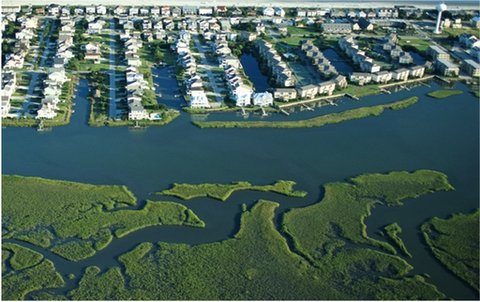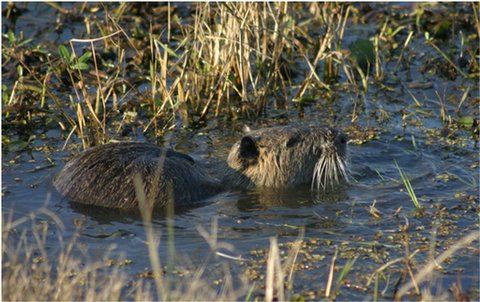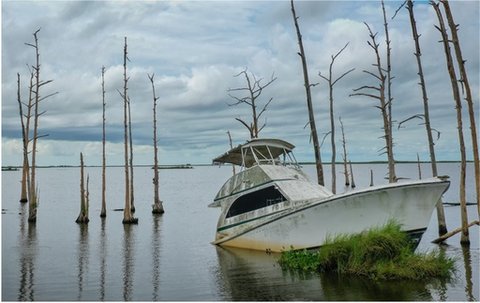…arelikegiant sponges.
Theypreventflooding.Duringheavyrains,theycollectandholdwater.Theyalsoprotectcoastalareasfromstormsthatcanwashawaybeachesand communities.
…actaswatertreatment facilities.
Theyfilterandcleanwater.Chemicalsfoundinfertilizeroftenwashintowetlands.Wetlandplants,fungi,andalgaeabsorbtheseharmfulchemicals.Otherpollutantssinktothebottom.Theretheyareburiedin soil.
…arehomesformany species.
Manyplantandanimalspeciesdependonwetlandsfortheirsurvival.
Two-thirdsofthefisheatenworldwidedependonwetlandsduringtheir life cycle.
…arediverse ecosystems.
WetlandscoveronlyfivepercentoftheUnitedStates.Yetmorethanone-thirdofthreatenedorendangeredspeciesintheU.S.liveonlyinwetlands.Anadditional20percentusewetlandsduringtheir lives.
…areimportantto people.
Nearly400millionpeopleliveclosetowetlands.Peopledependonthem.Theyusewetlandstogrowcropslikerice.Wetlandsarealsousedforfun.Peoplefishandboatonthem.Infact,Americansspendmorethan$100 billiononwetlandactivitiesevery year.
Asmuchashalftheworld’swetlandshavedisappearedsince1900,despitetheirvaluetopeopleand wildlife.
Development

Developmentoftenchangeswetlandsbyremovingvegetation.Thenwetlandsarefilledordrainedtobuildhousesand roads.
Invasive Species

Theintroductionofnon‑nativeplantsandanimalscausesnativespeciestocompete.Ifnativespeciesdieoff,theecosystemgets disrupted.
Agriculture

Wetlandsoilisoftenmadeintolandforfarming.Therunofffromnearbyfarmlandcanhurt wetlands.
Climate Change

Theriseinsealevelshasbeencausedbyclimatechange.Asaresult,manycoastalwetlandsmaybepermanently flooded.